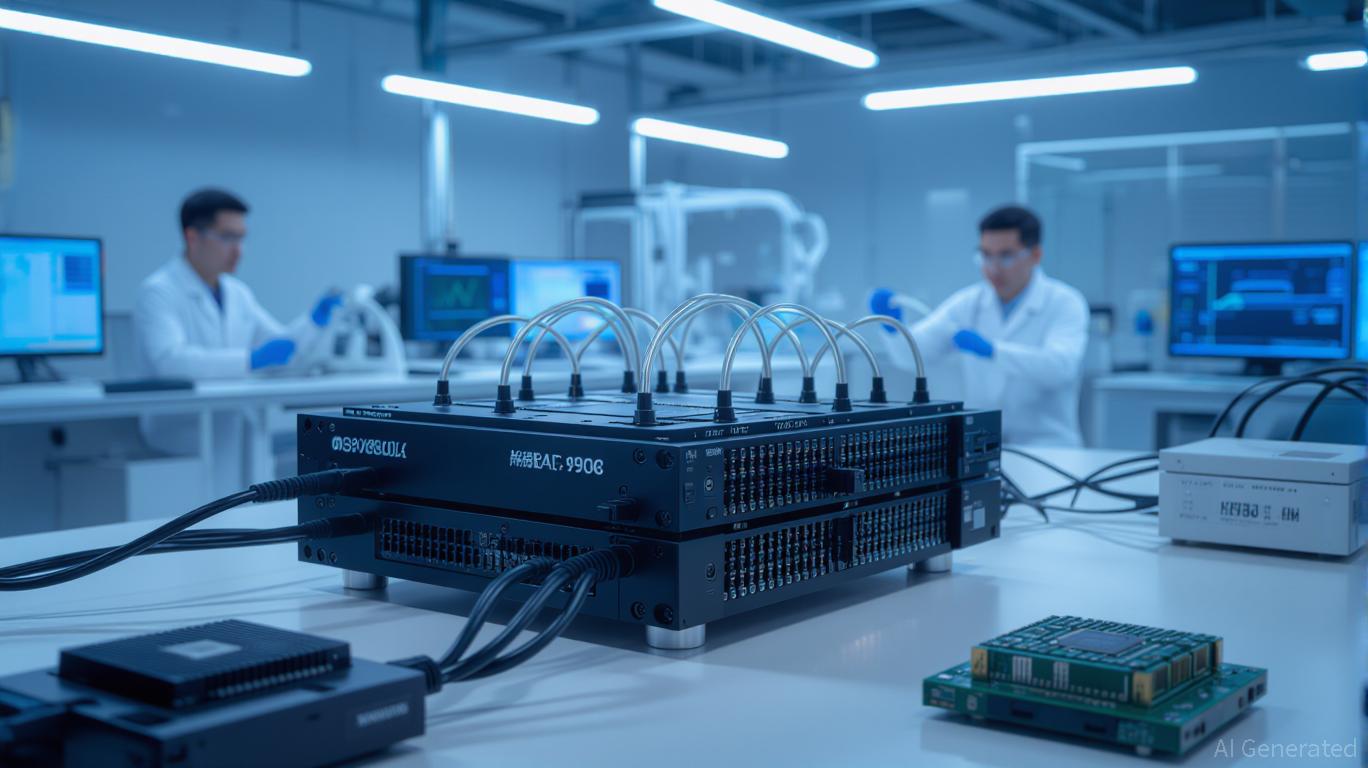The realm of computation is poised for a profound shift, potentially overshadowing the current enthusiasm surrounding AI. Novel technological advancements are set to reshape our methods of information processing, data retention, and human-machine interaction.
Beyond AI: The Next Frontier in Computing
While artificial intelligence has dominated headlines and investment strategies over the past several years, experts warn that the next major revolution in computing may come from entirely different innovations. Quantum computing, neuromorphic chips, and advanced photonics are among the technologies poised to dramatically alter the landscape of information technology. These advancements promise not only faster processing speeds but also fundamentally new ways of solving problems that current computers struggle to address.
Quantum computing, in particular, has attracted global attention for its ability to perform complex calculations far beyond the reach of classical machines. Unlike traditional computers, which use bits as ones or zeros, quantum computers rely on qubits that can exist in multiple states simultaneously. This capability allows them to process massive datasets, optimize complex systems, and solve problems in cryptography, materials science, and pharmaceuticals at unprecedented speed. While practical, large-scale quantum machines remain in development, ongoing experiments are already demonstrating advantages in specialized applications such as molecular modeling and climate simulations.
Neuromorphic computing offers another exciting avenue. Drawing inspiration from the human brain, neuromorphic processors are engineered to replicate neural networks, boasting exceptional energy efficiency and impressive parallel processing power. Such systems excel at tasks like recognizing patterns, making decisions, and learning adaptively with far greater efficiency than traditional processors. By imitating biological networks, neuromorphic technology holds the promise of transforming sectors from robotics to self-driving cars, enabling machines to learn and adjust in ways that more closely resemble natural intelligence than current AI setups.
The rise of photonics and alternative computing architectures
Photonics, or the use of light to perform computations, is gaining traction as an alternative to traditional silicon-based electronics. Optical computing can transmit and process data at the speed of light, reducing latency and energy consumption while dramatically increasing bandwidth. This technology could prove essential for data centers, telecommunications, and scientific research, where the volume and velocity of information are growing exponentially. Companies and research institutions worldwide are exploring ways to integrate photonics with conventional circuits, aiming to create hybrid systems that combine the best of both worlds.
Other unconventional approaches, such as spintronics and molecular computing, are also emerging. Spintronics leverages the quantum property of electron spin to store and manipulate data, potentially enabling memory and processing capabilities that surpass current hardware. Molecular computing, which uses molecules to perform logic operations, offers the prospect of miniaturizing components beyond the limits of silicon chips. These technologies remain largely experimental, but they highlight the breadth of innovation underway in the pursuit of computing beyond AI.
Societal and Industrial Ramifications
The influence of these emerging computational models will reach well beyond academic studies. Corporations, public administrations, and scientific organizations are getting ready for an era where challenges once deemed unsolvable can be tackled in mere hours or minutes. Enhancements in supply chain efficiency, climate prediction, pharmaceutical development, financial forecasting, and even national defense initiatives are poised to gain from more rapid, intelligent, and adaptable computing frameworks.
The pursuit of advanced computing power is a worldwide endeavor. Countries like the United States, China, and the nations comprising the European Union are allocating substantial resources to R&D initiatives, acknowledging the critical role of technological dominance. Private enterprises, ranging from established technology behemoths to agile new ventures, are likewise expanding the limits, frequently in partnership with academic bodies. This rivalry is fierce, yet it is simultaneously fueling swift advancements that have the potential to reshape entire sectors over the coming ten years.
As computing evolves, it may also change how we conceptualize human-machine interaction. Advanced architectures could enable devices that understand context more intuitively, perform complex reasoning in real time, and support collaborative problem-solving across multiple domains. Unlike current AI, which relies heavily on pre-trained models and vast datasets, these new technologies promise more dynamic, adaptive, and efficient solutions to a range of challenges.
Navigating the Future: Computing in a Post-AI Era
For businesses and policymakers, the emergence of these technologies presents both opportunities and challenges. Organizations will need to rethink their IT infrastructure, invest in workforce training, and explore partnerships with research institutions to leverage cutting-edge innovations. Governments must consider regulatory frameworks that ensure responsible use, cybersecurity, and equitable access to transformative technologies.
Education will play a critical role as well. Preparing the next generation of scientists, engineers, and analysts to work with quantum systems, neuromorphic chips, and photonics-based platforms will require significant changes in curricula and skill development. Interdisciplinary knowledge—combining physics, computer science, materials engineering, and applied mathematics—will become essential for those entering the field.
Meanwhile, ethical considerations remain central. New computing paradigms could amplify existing inequalities if access is limited to certain regions or institutions. Policymakers and technologists must balance the drive for innovation with the need to ensure that the benefits of advanced computing are broadly shared across society.
The future of AI and its implementations
Although artificial intelligence continues to draw worldwide interest, it represents just one facet of a broader surge in technological progress. The upcoming computing epoch could redefine machine capabilities, ranging from tackling complex scientific challenges to developing adaptable, brain-like systems that learn and evolve autonomously. Quantum, neuromorphic, and photonic innovations stand at the forefront of this transformation, promising levels of speed, efficiency, and functionality that surpass current digital paradigms.
As the frontiers of what’s achievable broaden, scientists, businesses, and authorities are getting ready to operate in an environment where computational strength ceases to be a constraint. The upcoming ten years might bring about a monumental technological transformation, altering how people engage with data, devices, and their surroundings—a period where computation itself evolves into a revolutionary power, extending far beyond the influence of artificial intelligence.



